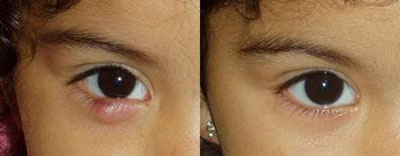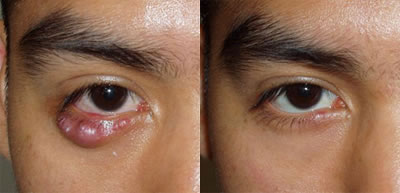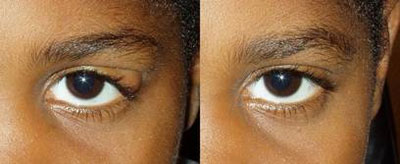A hordeolum, or stye, is an acute, localized, abscess of the eyelid.
Styes are more often seen in small children. Unlike Chalazia, most hordeolaresult from an infection of an eyelash follicle and or an adjacent sweat or oil gland in the eyelid. Follicle obstruction may be associated withblepharitis.
Chalazia also differ from styes (hordeola) in that they are
nontender and usually painless nodules. The first symptoms of a sty are generally tenderness and pain in the affected area. The eye may feel irritated or “scratchy” and develop swelling. Discomfort during blinking of the eye, watering of the eye, and sensitivity to light are also common findings. A common sign of a sty is a small, yellowish crusty spot at the center of the area of swelling that develops as pus expands in the area.
Just above the margin of our upper eyelid, and below the margin of our lower eyelid, there are cartilagenous plates (called Tarsal Plates) that keep our eyelids formed. Inside these plates, there are multiple (~20-30) “pillar-shaped” “meibomian” glands that secrete a viscous liquid that protect our ocular surface and help keep our eyes from drying up. These glands’ openings are just behind our eyelashes and can easily be seen under a microscope.
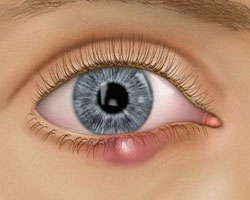
From time to time, for unknown reasons (very similar to a pimple), these glands get “plugged up” and this viscous material gets “backed up” into these tiny tubular structures. This is called Meibomian Gland Dysfunction (a form of “blepharitis”).
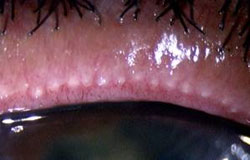
Meibomian gland openinings on the eyelidmargin get plugged
A chalazion is basically a cyst that forms as a result of this backed up gland in the eyelid that gets engorged & inflamed. Besides being very unsightly, this swelling leads to pain, irritation, tearing, and by pushing on the eyeball, even astigmatism.

Contrary to common belief, this condition is NOT an infection, and this is why they do not respond at all to topical antibiotics or ointments. Over-the-counter ointments and “herbal” remedies are also ineffective for the same reason: they do not do anything to help open the close gland or empty the backed-up content, rather, they just “lubricate” the eye. Needless to say, there is not a single textbook, article, or publication that ever indicates using a lubricating ointment to “treat” a chalazion. The only thing they do is to improve the irritation.
Chalazia, in their early stages, are best treated using warm compresses to the affected area. The application of heat helps “melt” the “lipogranulomatous” content of these cysts (like “melting butter”) and open the clogged meibomian gland orifices, thereby expediting recovery. Some recommend washing the eyelid margins with a mild detergent (e.g., baby shampoo) to help clean the area and prevent recurrences.
Eye-pressTM has been specifically designed to provide gentle, consistent, steady-state heat to the eyelids and at the same time, wash the eyelids with a hypo-allergenic “baby” shampoo formula to help cleanse the eyelid margins and prevent recurrences. Opinions regarding the frequency of use and duration of heat application vary among eye-care professionals, but in general, they can be used every 2-3 hours for up to week or until symptoms resolve. If affected, it is generally safe to start using eye-presses as soon as possible and see your eye-care professional (optometrist or ophthalmologist) at your earliest convenience.


